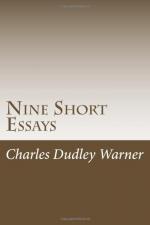We think the world is progressing in enlightenment; I suppose it is—inch by inch. But it is not easy to name an age that has cherished more delusions than ours, or been more superstitious, or more credulous, more eager to run after quackery. Especially is this true in regard to remedies for diseases, and the faith in healers and quacks outside of the regular, educated professors of the medical art. Is this an exaggeration? Consider the quantity of proprietary medicines taken in this country, some of them harmless, some of them good in some cases, some of them injurious, but generally taken without advice and in absolute ignorance of the nature of the disease or the specific action of the remedy. The drug-shops are full of them, especially in country towns; and in the far West and on the Pacific coast I have been astonished at the quantity and variety displayed. They are found in almost every house; the country is literally dosed to death with these manufactured nostrums and panaceas—and that is the most popular medicine which can be used for the greatest number of internal and external diseases and injuries. Many newspapers are half supported by advertising them, and millions and millions of dollars are invested in this popular industry. Needless to say that the patented remedies most in request are those that profess a secret and unscientific origin. Those most “purely vegetable” seem most suitable to the wooden-heads who believe in them, but if one were sufficiently advertised as not containing a single trace of vegetable matter, avoiding thus all possible conflict of one organic life with another organic life, it would be just as popular. The favorites are those that have been secretly used by an East Indian fakir, or accidentally discovered as the natural remedy, dug out of the ground by an American Indian tribe, or steeped in a kettle




